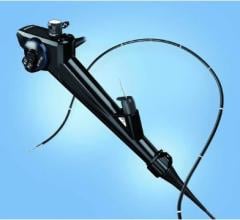June 5, 2014 — A team of researchers at the University of Texas Health Science Center at Houston (UTHealth) Medical School has developed a new technology that can noninvasively image the human lymphatic system (also known as “lymphatics”). A fluorescent dye and commercially available laser diode and military-grade night vision devices were used to visualize the lymphatic capillaries.
June 5, 2014 — Fairview Health Services, Minneapolis, recently became the first U.S. healthcare facility to install the Symbia Intevo xSPECT system from Siemens Healthcare. The first ever xSPECT system, the Symbia Intevo fully integrates single-photon emission computed tomography (SPECT) and CT during image reconstruction, combining SPECT’s high sensitivity with the high specificity of CT and completely integrating data from the two modalities to generate high resolution and, for the first time, quantitative images.
When a health insurance company denies a claim, most people complain to their friends and family and then accept it, arranging payment methods or even denying themselves a procedure that may save their life. However, one patient decided to fight back and challenge her insurance carrier.
While most women understand the importance of health screenings, an estimated 72 million have missed or postponed a ...
The American Society for Radiation Oncology (ASTRO) has issued a new model policy for proton beam therapy (PBT) that details which cancer diagnoses meet ASTRO’s evidence-based standards and should be covered by private insurers and Medicare.
The U.S. Food and Drug Administration (FDA) recently cleared BB Medical Surgical’s Thixo-Gel, which is sprayed on to the patient to enable quicker and easier ultrasound scans.

SPONSORED CONTENT — Fujifilm’s latest CT technology brings exceptional image quality to a compact and user- and patient ...
Olympus announced the commercial availability of its U.S. Food and Drug Administration (FDA) 510(k)-cleared, next-generation BF-P190 and BF-XP190 bronchoscopes for peripheral and small anatomy bronchoscopy.
Fujifilm’s APERTO Lucent is a 0.4T mid-field, open MRI system addressing today’s capability and image quality needs ...
What started with a chug and a whisper is growing in both momentum and volume. Can you hear that whistle blowing?
The radiation therapy market, hit hard in 2009 by the recession, saw a sharp decline in purchasing from which it has slowly recovered. During the last five years the market has been steadily growing, with capital equipment budgets for radiation oncology sites increasing. However, it has only been within the last year that equipment purchases for radiation therapy have leveled out. Purchasing decisions today are driven by two main factors: advancements in technology, including more targeted treatment, multifunctional capabilities and improved patient safety; and the evolving reimbursement model, which weighs patient outcomes and the quality of care delivered more heavily.
June 3, 2014 — Elekta announced it signed an agreement to provide the Centre Hospitalier de l'Universite de Montreal (University of Montreal Health Centre, or CHUM) with advanced linear accelerators and software. The order, resulting from a competitive tender process, is valued at more than $20 million USD.
SPONSORED CONTENT — Fujifilm’s latest CT technology brings exceptional image quality to a compact and user- and patient ...
June 3, 2014 — Research conducted by a group of neuroscientists has demonstrated for the first time that it is possible to train brain patterns associated with empathic feelings – more specifically, tenderness. The research showed that volunteers who received neurofeedback about their own brain activity patterns whilst being scanned inside a functional magnetic resonance imaging (fMRI) machine were able to change brain network function of areas related to tenderness and affection felt toward loved ones.
An art critic once wrote, “If all women resembled those painted by Picasso, the Earth would be depopulated toward the end of the century.” The critic was speaking about Picasso’s “Woman in a Green Hat,” describing the model in the painting as “corpselike,” “greenish” and “formless.”
June 3, 2014 — Summit Imaging, a privately held ultrasound medical equipment support company, announced its new standard six-month warranty for all parts and services. The company’s new warranty sets the bar for its industry, in which standard warranties range from 30 to 90 days.
SPONSORED CONTENT — EnsightTM 2.0 is the newest version of Enlitic’s data standardization software framework. Ensight is ...
The American Recovery and Reinvestment Act (ARRA) of 2009 changed the healthcare IT landscape for providers by offering money in exchange for the adoption and implementation of electronic medical records (EMR). One year later, the Affordable Care Act (ACA) upped the ante with new regulations for privacy, accountable care and insurance coverage. The combination of the two acts has left most providers and provider organizations struggling to see the forest through the trees as the deadlines to comply with both acts draw ever closer.
As research and development continues to reveal the benefits of medical imaging in healthcare, vendors are steadily improving imaging scanners for added efficiency and workflow. Because advanced visualization technologies are a part of the larger medical imaging discussion, these products are also evolving and growing in response to innovation within medical imaging.

SPONSORED CONTENT — EnsightTM 2.0 is the newest version of Enlitic’s data standardization software framework. Ensight is ...
Even for the most seasoned radiologists and hospital administrators, the rapid advances on new technology such as cloud storage, Web-based software and mobile apps may leave some wondering where to start when vetting healthcare IT vendors. For those who feel this description fits them, you are not alone; a session on this topic was packed solid during the 2014 Healthcare Information and Management Systems Society (HIMSS) annual meeting in February.
When Radiology Associates of Venice & Englewood (RAVE) replaced its 2D mammography systems with 3D technology last year, it was an unusual move. The practice’s existing 2D systems were still in prime working condition, performing 15,000 mammograms a year. “It was a bold decision to replace working equipment,” acknowledged Mike Kimball, radiology director, “but 3D is the future of breast imaging and is the right way to provide our patients with the best service.”
Today, only 12 percent of breast cancers in the United States are treated with accelerated partial breast irradiation (APBI). Breast brachytherapy is a form of APBI that delivers radiation dose from within the breast and tumor cavity using a tiny radioactive pellet of iridium-192. The clinical benefits of this targeted approach to radiation delivery are clear — reduced radiation exposure to healthy tissue, better cosmetic results and fewer side effects, and allowing more future treatment options in the event of a recurrence or new primary cancer.
A recent whitepaper by the Economist Intelligence Unit deems value in the “emerging new currency within health markets.” Since medical imaging represents a fairly large segment of the broader healthcare market and certainly one of the most capital-intensive — even if dwarfed in size by other segments such as its pharmaceutical counterpart — this farsighted statement begs the question, “Would saying value has already emerged as a major new currency within the U.S. medical imaging market be too much of an overstatement?”
Radiation dose management has come to the forefront of healthcare concerns with both patients and providers advocating for measures that will decrease and manage exposure. Research has shown that medical imaging has doubled the public’s exposure to ionizing radiation since the 1980s, and while this statistic includes fluoroscopy, angiography, mammography and standard X-ray, computed tomography (CT) has contributed the majority of the dose increase.
Big data was the hot topic of conversation at the recent 2014 Annual Meeting of the Society for Imaging Informatics in Medicine (SIIM) in Long Beach, Calif. Most discussions — both in the classrooms and on the exhibit hall floor — revolved around solving enterprise medical image management issues, adapting big data within healthcare practice and research, and understanding the current culture of healthcare enterprise IT.


 June 05, 2014
June 05, 2014 













